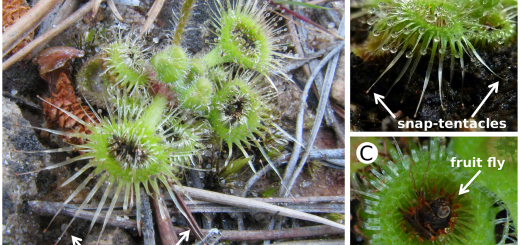Chili peppers — news with a kick!
The Guinness world record for the hottest chili was previously held by Smokin Ed’s Carolina Reaper, which measures at approximately 1,569,300 Scoville Heat Units (SHU)[1]. However, as of 2023, the incumbent pepper has been dethroned by the menacingly named Pepper X, which comes in at a staggering 2,693,000 SHU[2]. For reference, the more tolerable Jalapeno ranges from 3,500–10,000 SHU, with a Habanero registering at 100,000–350,000 SHU (which would see most people at least break a sweat)[3]. The new king of spice was masterminded by the previous record holder, who for over 10 years since their last record has carefully cultivated Pepper X by cross breeding it with some of the hottest peppers to increase its heat intensity.
Before being traded across the world, the chili pepper is believed to have originated in areas of central America surrounding the north Amazon basin[4]. Chili peppers produce a powerful and pungent compound called capsaicin[5]. In the broadest sense, capsaicin is an irritant to mammals (i.e., humans) and produces a sensation of scalding heat and pain in any tissue with which it comes into contact (i.e., the tongue)[6]. Remarkably, birds are immune to the burn of chilis as their version of the capsaicin receptor is unresponsive. The chili is thought to have evolved this ability as both a line of defence from local mammals and as a method of seed dispersal when consumed by birds[7].
Contrary to popular belief it is not actually the seeds of a chili which make it spicy. The part where most capsaicin resides is in the tissue which holds the seeds, known as the placenta[8]. For those who find themselves with too much heat, milk is always the top choice. Water only makes it worse as capsaicin is hydrophobic! [9]
[1] Confirmed: Smokin Ed’s Carolina Reaper sets new record for hottest chilli | Guinness World Records
[2] Pepper X dethrones Carolina Reaper as world’s hottest chilli pepper | Guinness World Records
[3] Chile Pepper Heat Scoville Scale – Home Cooking (archive.org)
[4] Chili Pepper History: Where Do Peppers Come From? (pepperscale.com)
[5] Capsaicin: Current Understanding of Its Mechanisms and Therapy of Pain and Other Pre-Clinical and Clinical Uses – PMC (nih.gov)
[7] Why Birds Are Immune to the Burn of Hot Peppers (perkypet.com)
[8] Pepper Anatomy: What’s Inside Your Chili? (pepperscale.com)
[9] How to Cool Your Tongue After Eating Spicy Food: 9 Steps (wikihow.com)
Edited by Despoina Allagioti
Copy-edited by Rachel Shannon








